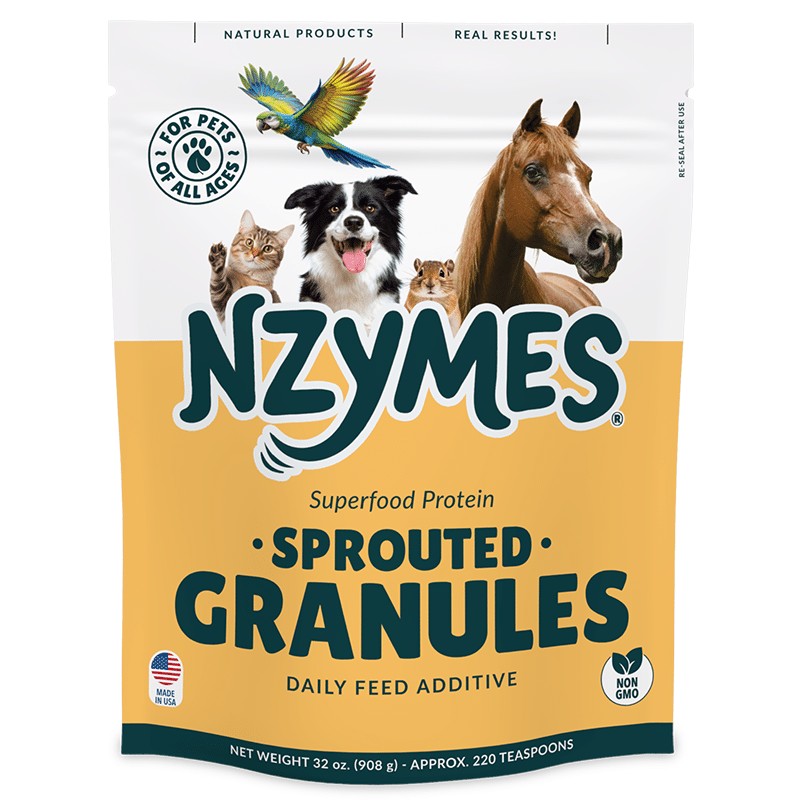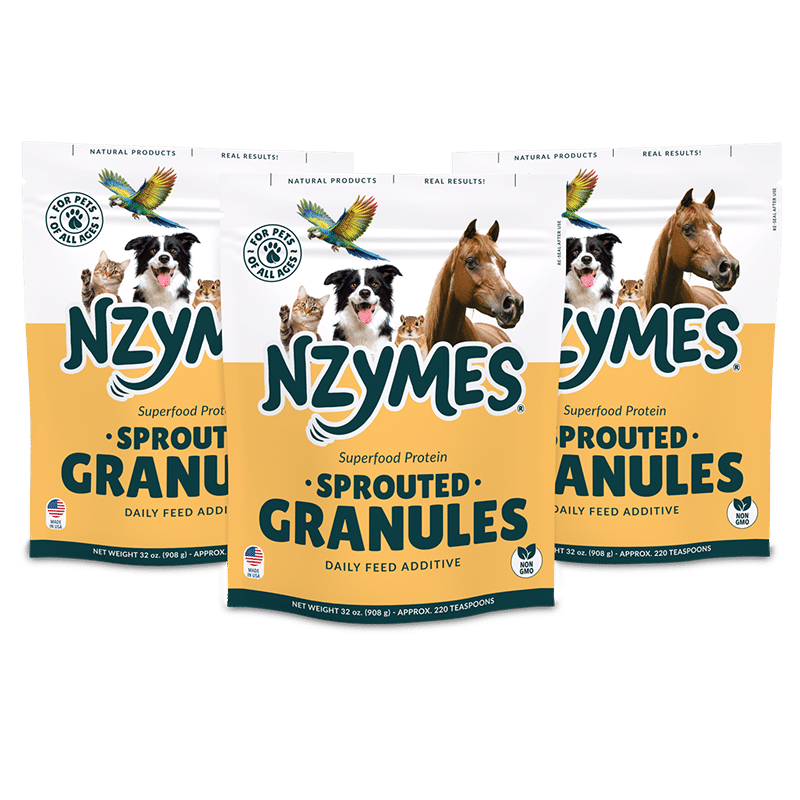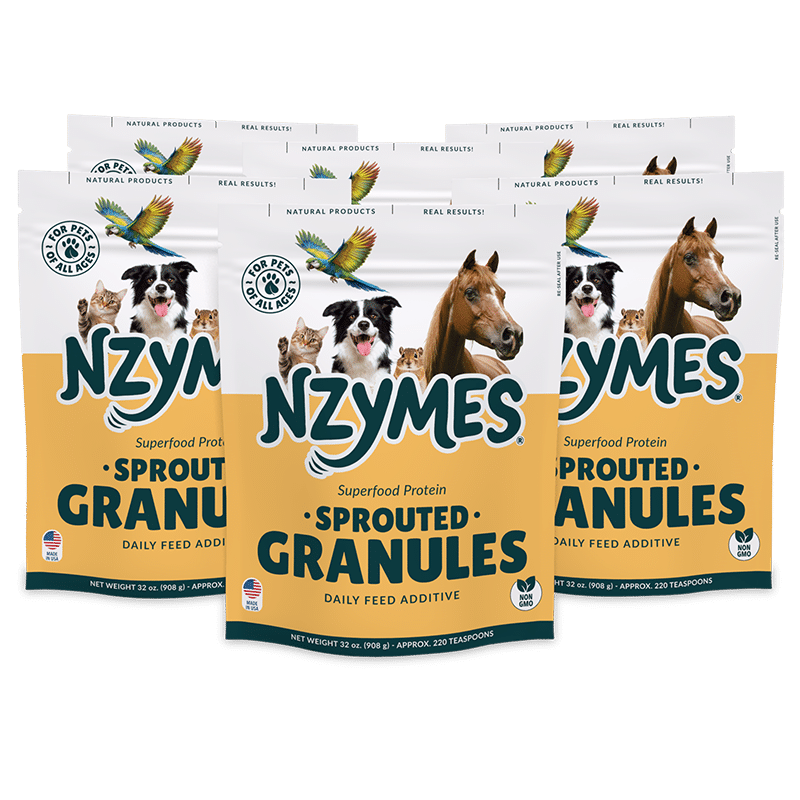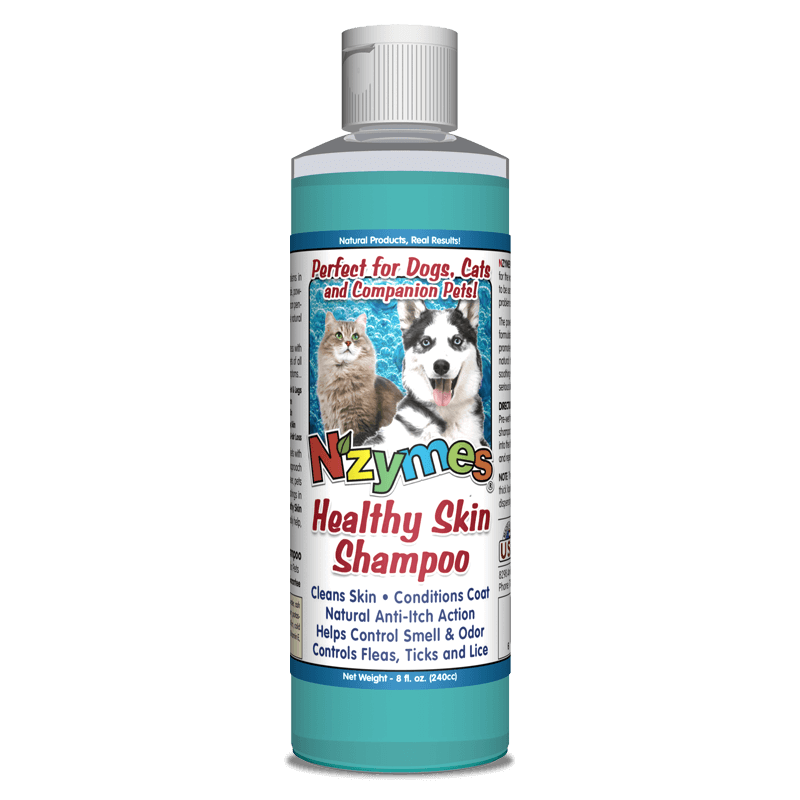
Symptoms of Horse Sprains and Strains
With horses, the difference between a sprain and a strain is that a sprain is an injury to the ligaments in a joint. A strain is an injury to a muscle or to the tendon of the muscle around the joint. Both forms of injuries can be painful, and the horse may be “off” in his gaits or possibly lame.
Common causes of sprains and strains are stepping in unknown holes, falling, twisting, repetitive strenuous activity, or trauma to the joint. Injuries such as these can cause the leg joint to move out of its normal range. This action can tear or stretch the ligaments, muscles, and tendons as this happens.
-
- Pain when injured area is played with, such as twitching or pulling away a leg
- Heat, swelling, tender areas and discomfort
- Lameness that is visible in the first 1 to 2 days of injury, with some limping for several days after
- Weakness, Muscle stiffness, Trembling
- Cuts, scrapes, loss of hair or bruises over or around the injured are
- Refusal to jump or be ridden, changes in gait, reluctance to move or a decreased level of performance
What You Should Know
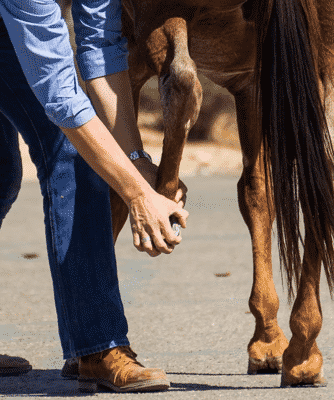
Working through Horse Sprains and Strains in Horses
You will know by looking at your horse. If you are not sure and want to call your vet consider these variables. Some cases need the the vet, but some others are minor issues and the need for vet intervention is not there. Use your best judgment. Your vet can help diagnose the injury as a sprain, strain or if it is lameness from a different condition, like a foot abscess. The sooner you can begin to deal with the pain and other symptoms the faster you can get your horse on the road to recovery.
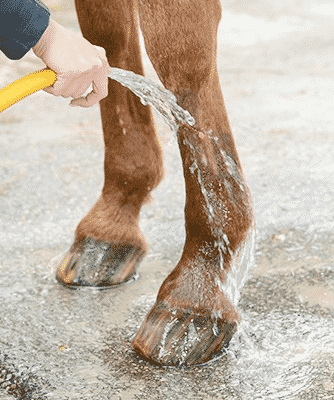
Cold Hosing Therapy:
A simple form of hydrotherapy. It is used on a horse’s leg or injury to reduce swelling in the affected area, draw out heat, but also provides some relief. Cold hosing is easy to do, if your horse stands still. Run water from a garden hose over the injured area for 20 minutes. This can be done twice a day until the swelling has subsided. The trick, however, is to get your horse to stand quietly as the water runs down their legs for that length of time.
If your horse is uneasy about this, start low on the leg and gradually work your way up to the injured area. This should help your horse to feel calmer about the water running down the leg. If you are in an area where the Winter season is below freezing and are unable to use a hose or running water, ice packs can be just as beneficial. Applying an ice pack to the injury for a duration of 20 mins will have the same effect as cold hosing.
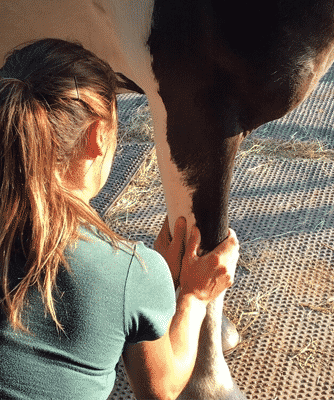
Heat and Massage
Heat: Using heat packs after the cold hosing or ice packs have worked out all the swelling is sometimes recommended. Do not apply heat until the horse is well into the recovery period by several days to a week. Warm moist heat can help relieve pain as well as increase blood flow to the are of injury. Apply heat for 20 minutes at a time, once or twice a day, when the horse begins rehab.
Massage: applying light hand pressure and rubbing the horse’s injury works to gently to increase circulation and can potentially reduce scar tissue. When massaging the injury, try to use long strokes on the ankle and lower legs, running your hand the full length of the leg. The goal with any injury, is to bring back the full range of motion so by massaging as well as light exercise will help the recovery process.
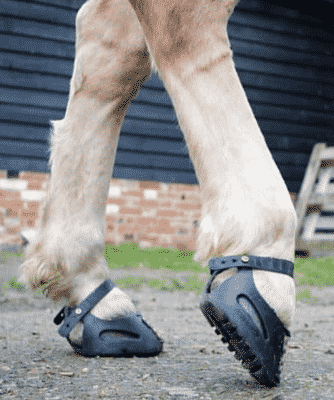
Shod Horses:
if you horse is wearing shoes, you can replace these with therapeutic shoes. Your farrier can give you assistance in recommending a removable set of the special shoes or can be semi permanently applied to the hooves. These may not be suited for all sprains and strains, but they can help to absorb impact on the ground during your horses recovery.
Rest:
Allow your horse lots of time to rest and recover. If you and your horse get back into workout routines to quickly, it can result in re-injury, making rehabilitation harder.
Using Nzymes Superfood to Support Horse Sprains and Strains
At Nzymes.COM, we are dedicated to healthier horses and we promote a holistic nutritional approach to health. This practice is gaining recognition with nutrition conscious Veterinarians, Breeders, Trainers and Owners. They know that when given the proper nutritional resources, the body of a horse has amazing restorative powers. It can repair faster, fight infection and disease more readily and maintain better natural defenses throughout life. We offer a simple natural way to faster recovery with a cost-effective product that provides the real results you expect.
Based on your Horse’s Weight (see package)
We recommend to “DOUBLE” the daily use amount of Nzymes® Super-Food Granules for 2 weeks. Some damage / injuries may require longer recovery and may possibly need additional product for support. 2 weeks is a good judgement period for the amounts you should use daily. Nzymes® Super-Food Granules are all natural and excellent source of protein to support injury and recovery.
We believe you will have success and we give a “120-Day” Money Back Guarantee with every product sold.

